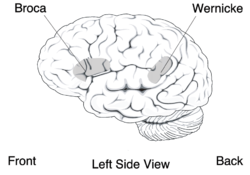 |
| Our narrative engines |
Neuroscientist John Bickle and philosophy of science student Sean Keating
describe how the brain's narrative machine works.
State-of-the-art neuro-imaging and cognitive neuropsychology both uphold the idea that we create our "selves" through narrative. Based on a half-century's research on "split-brain" patients, neuroscientist Michael Gazzaniga argues that the human brain's left hemisphere is specialised for intelligent behaviour and hypothesis formation.
It also possesses the unique capacity to interpret - that is, narrate - behaviours and emotional states initiated by either hemisphere. Not surprisingly, the left hemisphere is also the language hemisphere, with specialised cortical regions for producing, interpreting and understanding speech. It is also the hemisphere that produces narratives.
Gazzaniga also thinks that this left-hemisphere "interpreter" creates the unified feeling of an autobiographical, personal, unique self. "The interpreter sustains a running narrative of our actions, emotions, thoughts, and dreams. The interpreter is the glue that keeps our story unified, and creates our sense of being a coherent, rational agent. To our bag of individual instincts it brings theories about our lives. These narratives of our past behaviour seep into our awareness and give us an autobiography," he writes.
The language areas of the left hemisphere are well placed to carry out these tasks. They draw on information in memory (amygdalo-hippocampal circuits, dorsolateral prefrontal cortices) and planning regions (orbitofrontal cortices). As neurologist Jeffrey Saver has shown, damage to these regions disrupts narration in a variety of ways, ranging from unbounded narration, in which a person generates narratives unconstrained by reality, to denarration, the inability to generate any narratives, external or internal.
One compelling study used PET imaging to watch what is going on in the brain during inner speech. As expected, this showed activity in the classic speech production area known as Broca's area. But also active was Wernicke's area, the brain region for language comprehension, suggesting that not only do the brain's speech areas produce silent inner speech, but that our inner voice is understood and interpreted by the comprehension areas. The result of all this activity, I suggested, is the narrative self.
More at the
link.

No comments:
Post a Comment